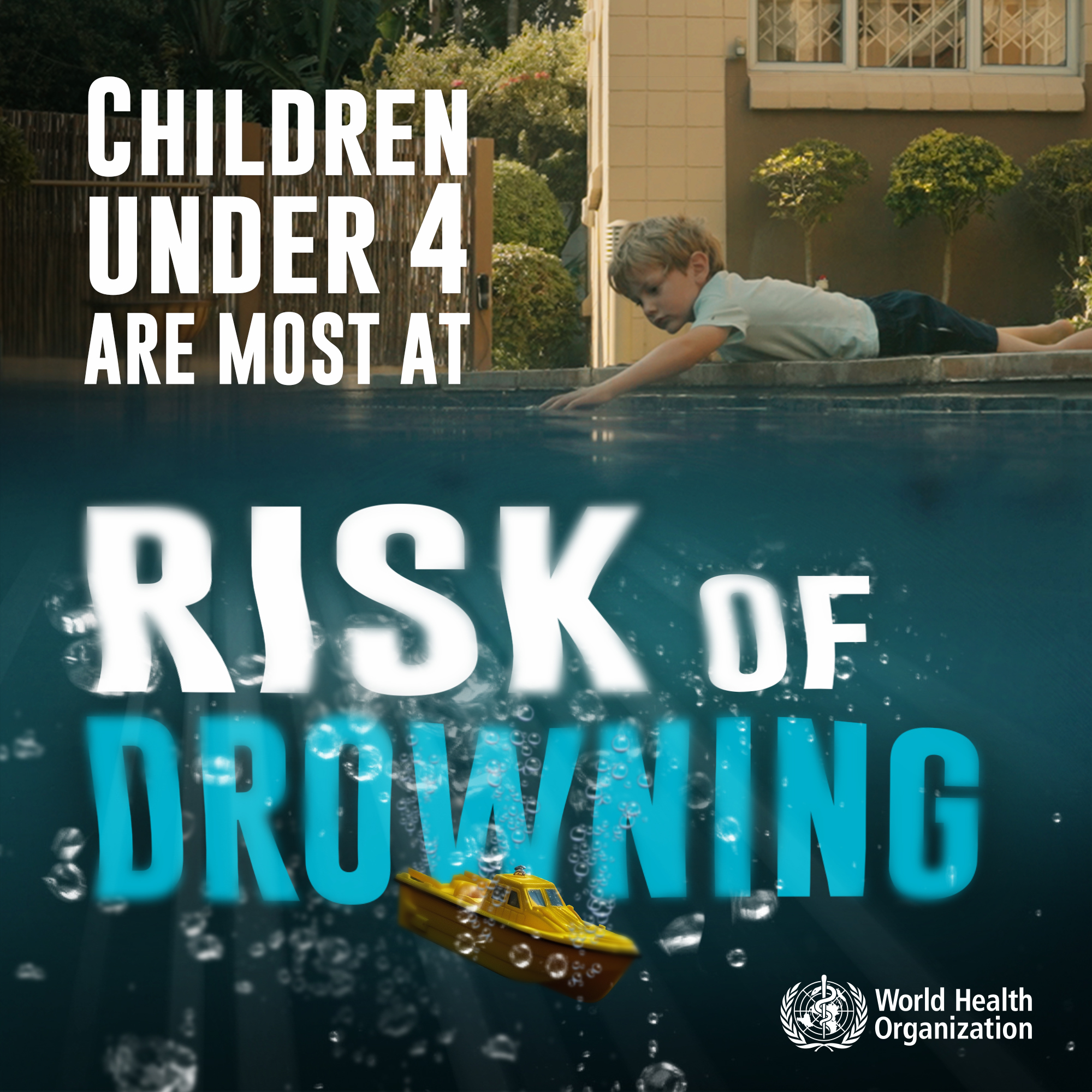To : All News Editors
Issued : 24 July 2024
Attention : News Reporters / Health and Lifestyle Reporters / Newswires
FOR IMMEDIATE RELEASE
World Drowning Prevention Day on 25 July –: Anyone can drown, but no one should!
________________________________________________________________

ChildSafe South Africa calls for integration of Water Literacy and Drowning Prevention in Child Safety Policies
CAPE TOWN – ChildSafe South Africa, a leading child safety organisation, urgently calls upon the South African government and relevant structures to prioritize water literacy and drowning prevention within the broader framework of child safety. By integrating these critical elements into the Child Care and Protection Policy, we can enhance child safety measures and empower South African children with the knowledge and support needed to protect themselves in aquatic environments.
The Global Context: A Silent Epidemic
Drowning remains a significant global threat to children’s lives. The World Health Organization’s alarming statistics underscore the severity of the issue:
- 2.5 million preventable deaths due to drowning in the past decade.
- In 2019 alone, 235,600 people lost their lives to drowning—equivalent to 650 deaths every day or 26 every hour.
- Drowning ranks among the top 10 causes of death for children and young people aged 1–24 years worldwide.
South Africa’s Disturbing Reality
South Africa is globally listed among the top 45 countries with a drowning rate of 4.06 per 100,000 population. Our nation faces a silent epidemic that demands immediate attention. Freshwater bodies, pools, and the ocean continue to be high-risk areas where preventable tragedies occur.
More than 2500 South Africans lose their lives annually due to fatal drowning of which at least 30% of these fatal casualties are children under the age of 18. The largest proportion of children that drown are those under the age of 4. This translates to an average of 1 to 2 children drowning every day in South Africa.
Research shows drowning incidents in South Africa reveal specific patterns: The 1–4-year age group has the highest prevalence of drowning among all the age categories. More males drown in South Africa compared to females. Sunday is the day of the week when fatal drownings occur most frequently, followed by Saturdays. Fatal drownings are most frequently reported between 16:00 and 20:00
“The fatal drowning statistics in South Africa are alarming. To address this issue, Water Safety Education has been a core component of the National Sea Rescue Institute’s education and training efforts since 2006,” said NSRI CEO Dr Cleeve Robertson.
“Over 18 years, the NSRI has made a significant impact by educating a staggering 4,703,094 individuals in water safety, with a record-breaking number of 905,185 people trained in 2023 alone.”
“Last year our Drowning Prevention Instructors also taught 17,998 in-water survival swimming lessons, many of which were in rural communities. This year, we plan to increase the reach of our water safety programmes through partnerships with organisations such as ChildSafe,” said Dr Robertson.
ChildSafe’s Call to Action
ChildSafe Spokesperson and Executive Director, Zaitoon Rabaney, emphasizes the urgency of this issue:
“Integrating water literacy and drowning prevention into child safety policies is not just a recommendation; it’s a moral imperative. Our children deserve the tools and awareness necessary to navigate aquatic environments safely. By doing so, we can prevent needless loss of life.”
As we engage with communities during World Drowning Prevention Day, let’s spread the message that anyone can drown, but no one should.
Safety Measures:
Teach Children to Swim: Equipping children with swimming skills is essential. Swimming lessons can truly save lives!
Supervise Children: Always keep a close eye on children near water. Never leave them unattended.
No Alcohol Near Water: Avoid drinking alcohol when supervising children around water. Staying sharp and vigilant ensures their safety.
Be Aware of Surroundings: Before swimming, check weather and water conditions. Staying informed helps prevent accidents.
Use Safety Equipment: Ensure life buoys and life jackets are available and used correctly. Proper safety gear can make a crucial difference.
ENDS
ISSUED BY: ChildSafe South Africa with the National Sea Rescue Institute
MEDIA ENQUIRIES:
ChildSafe South Africa
Shane Everts
Strategic Communications
061 526 2200
shane@childsafe.org.za
National Sea Rescue Institute
Andrew Ingram
NSRI Communications Manager
021 434 4011 | 082 990 5977
andrewi@searescue.org.za
About ChildSafe South Africa
ChildSafe South Africa is a not-for-profit organisation which aims to reduce and prevent injuries of children through Research, Education, and Advocacy. The organisation is a registered NPO with section 18A exemption who works with other non-profits, government, corporates, and communities. Our core focus though is the prevention of unintentional injuries that are usually regarded as accidents, such as, burns, falls, drowning, road traffic crashes, choking and poisoning. For more information, visit www.childsafe.org.za
About the National Sea Rescue Institute
The National Sea Rescue Institute (NSRI) is a registered non-profit organisation that is committed to drowning prevention and focused on saving lives, changing lives and creating futures for those threatened by drowning in South Africa.
We are unique in South Africa as the only non-profit organisation focusing exclusively on safeguarding lives and livelihoods in South African waters through education, prevention, and rescue operations. We envision a nation where drowning incidents are minimised, ensuring the safety of all. The NSRI strives to innovate, constantly evolve, and extend our water safety initiatives through empowerment and visibility. Our volunteers are on call 24/7 and are reliant on donations and sponsorships. Please visit www.nsri.org.za for more information. NSRI EMERGENCY: 087 094 9774
